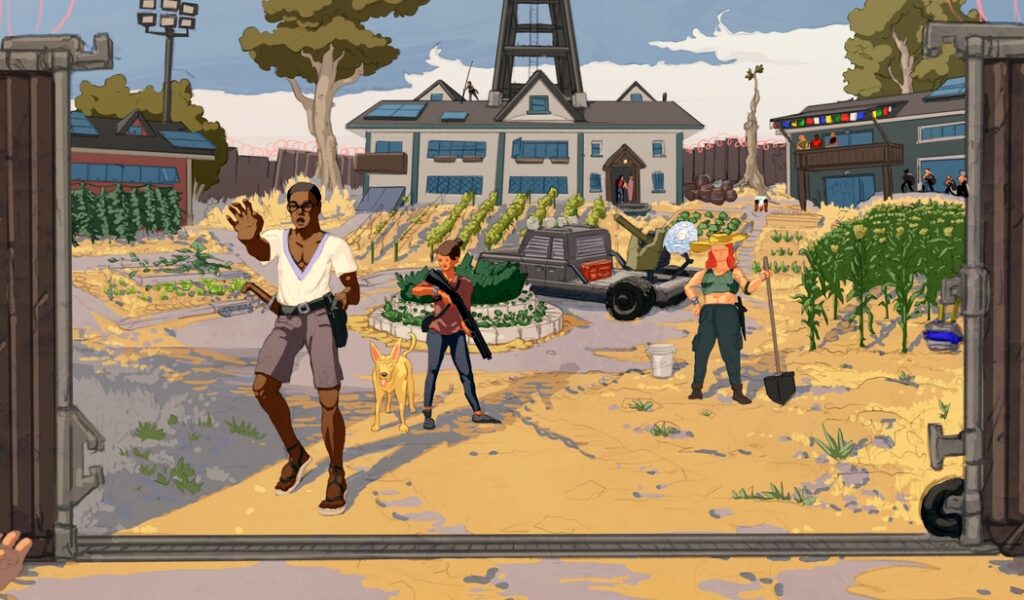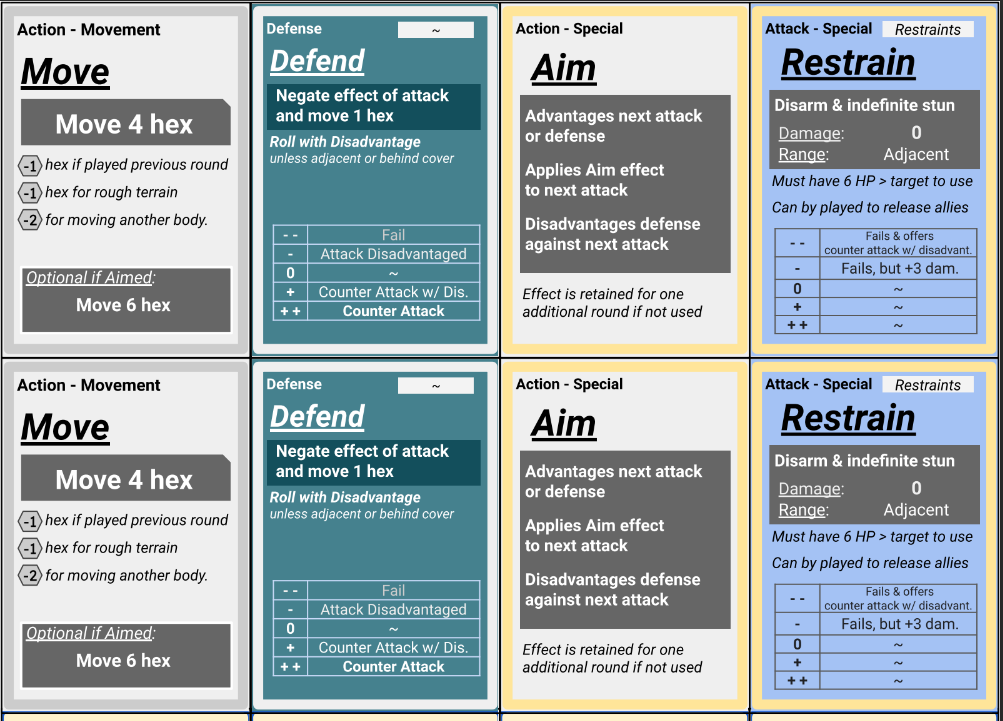Fully Automated used a custom combat system designed to finally provide some semblance of a tabletop fighting experience that conforms to the expectation that fighting be fast, intuitive, and feel logically consistent with how we imagine physical conflict to work.

How’s it work?
In order to make combat rounds fast and tactics feel instinctive, every player in the fight picks their move at the start of the round. Most characters have available to them a close attack, a ranged attack, defend, move, aim, and restrain. Everyone then reveals their move at once, and any attacks played are resolved in the established turn order.
There’s no waiting for each player to decide what to do when their turn arrives. There’s also not much use in doing a lot of math. Like a game of poker, you look at the table and think, ‘What would I do if I were them? What do they think I’ll do?’
The result is that every player has about ten seconds to decide if they feel like they’re in a position to attack or they need to guard themselves and then commit to that.
So how’s this work in practice?
Surprisingly well. We borrowed a mechanic from rock-paper-scissors: if your adversary is predictable in their constant attacks, using defend offers a chance to counter attack. If your adversary over-relies on defense, you can use aim to buff your next attack, which can overwhelm their defense. But the aim action is only successful of the player doesn’t take damage on the round, so it’s only usable if you can predict that you’re not going to be attacked.
Interpreting a situation then comes down to finding good positions on the map and taking a good read of your opponent’s posture. Players who enjoy tactical combat should find that the system offers a lot of avenues to successfully apply strategy. And players who don’t like doing a lot of thinking may find that a wildcard approach can often work very well.
And if building characters with a high Combat skill is your interest, you can obtain weapons and abilities that allow you to attack from greater range, disregard damage from one attack, aim without making yourself vulnerable once per day, and so on.
What’s remarkable is that the system performs well in very diverse arrangements. You can simulate an unarmed bar fight, armed martial arts, ranged gunfights, and all manner of combinations. If this appeals to you, check out the full description in the manual.
But… why?
Admittedly, this can all feel incongruent to some readers.
Why did we put so much effort into describing fighting? Isn’t the game predicated on a world where people eschew a worldview of domination and violence?
First, keep in mind that you’re free to disregard this. You don’t have to play combat scenarios, or use this system.
That said, there were several reasons we developed this system. The first is that physical confrontation is a staple of adventure games, and for understandable reasons. Not only have audiences always found violence narratively compelling, it is the inevitable final arena of conflict resolution when every other means has failed. By designing the system, we can design the experience. We can make violence feel threatening and unpredictable, as it should. We can also design it so that fights typically end in circumstances other than just bludgeoning an opposing miniature to death.
But why not just roleplay combat?
Because it doesn’t work. It’s completely subjective. It takes an incredibly skilled GM to make it interesting or coherent. It’s slow. It’s stressful and generally not fun for any table I’ve ever seen.
Even if you don’t like running combat (and we’re right with you), having a combat system that is easy for a GM to use raises the stakes when situations get tense. Knowing that a fight is possible and easy for the GM to run in-game makes the risk of violence more present from the metagame perspective of players. This increases the stakes and instills standoffs with a higher urgency to deescalate.
Lastly, there’s just the simple fact that if we’re going to release a game, it’s our opportunity to do things the way we think is right. We’d never seen a combat system we liked, and we developed one that we happen to think is quite remarkable. So this was the chance to try to show off the way we think combat should be done.

